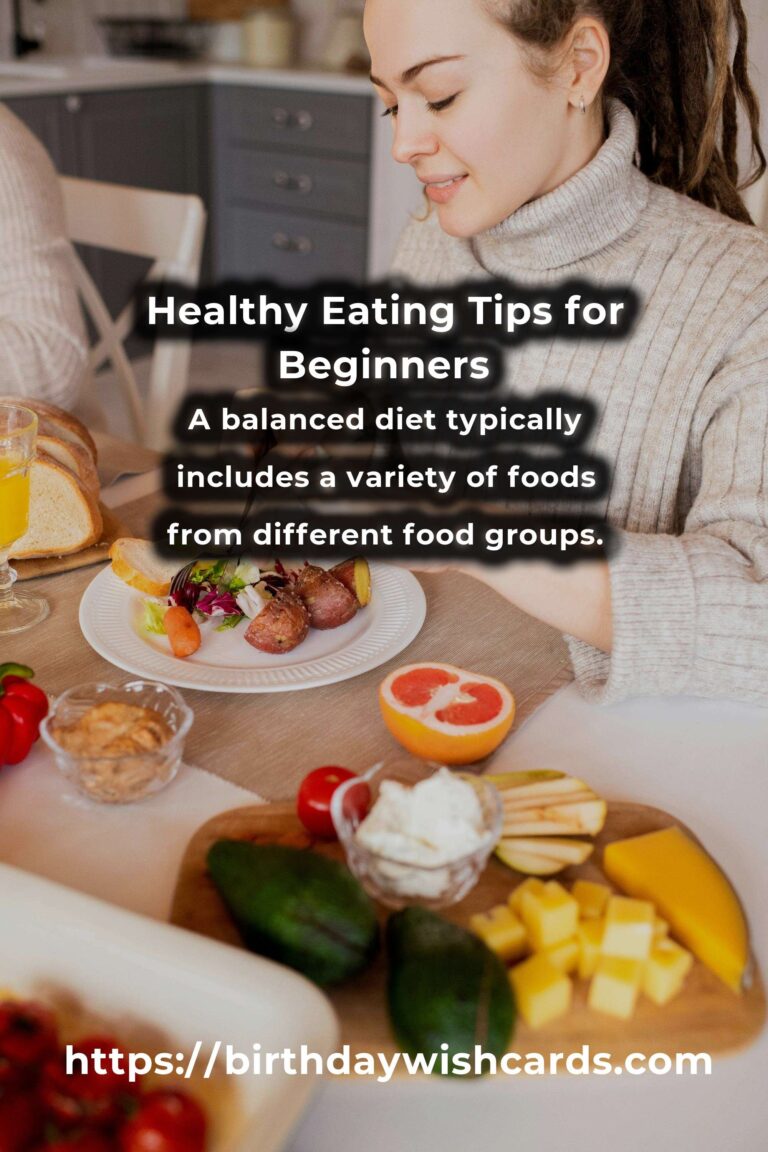
Embarking on a journey towards healthier eating habits can be both exciting and daunting. With a plethora of information available, it’s easy to feel overwhelmed. This guide aims to simplify the process by offering practical tips and strategies for a balanced diet.
Understanding Nutritional Basics
Before diving into specific eating methods, it’s important to understand the basics of nutrition. A balanced diet typically includes a variety of foods from different food groups: proteins, carbohydrates, fats, vitamins, and minerals. Each of these nutrients plays a crucial role in maintaining overall health.
Proteins are essential for building and repairing tissues. Common sources include meat, fish, eggs, and plant-based options like beans and lentils. Carbohydrates, found in fruits, vegetables, and whole grains, provide energy. Fats are also necessary for energy and cell function, with healthy options including avocados, nuts, and olive oil.
Portion Control
Portion control is a fundamental aspect of healthy eating. It involves being mindful of the quantity of food consumed at each meal. By avoiding oversized portions, you can prevent overeating and manage your weight more effectively. Using smaller plates and serving sizes can help maintain appropriate portions.
Incorporating Whole Foods
Whole foods are minimally processed and closer to their natural state. They are rich in nutrients and fiber, which are beneficial for digestion and overall health. Incorporating more whole foods into your diet can include eating more fruits, vegetables, whole grains, and lean proteins.
Staying Hydrated
Water is essential for life and plays a critical role in bodily functions. Staying hydrated supports metabolism, aids in digestion, and helps maintain energy levels. It’s recommended to drink at least 8 cups of water a day, but individual needs may vary based on activity level and climate.
Mindful Eating Practices
Mindful eating is about paying full attention to the experience of eating and drinking, both inside and outside the body. It involves noticing the colors, smells, textures, flavors, temperatures, and even the sounds of food. Mindful eating helps improve your relationship with food and can aid in recognizing hunger and fullness cues.
Meal Planning and Preparation
Planning meals ahead of time can lead to healthier eating habits. It allows you to make conscious choices rather than impulse decisions. Start by creating a weekly menu and shopping list to ensure you have the necessary ingredients. Preparing meals at home gives you control over the ingredients and portion sizes.
Avoiding Processed Foods
Processed foods often contain added sugars, unhealthy fats, and preservatives. Reducing your intake of these foods can significantly improve your diet. Instead, focus on eating fresh, whole foods that provide essential nutrients without the added chemicals.
Conclusion
Adopting healthy eating methods doesn’t have to be complicated. By understanding nutritional basics, focusing on portion control, incorporating whole foods, staying hydrated, practicing mindful eating, planning meals, and avoiding processed foods, you can achieve a balanced diet that supports your overall well-being.
Remember, making small, gradual changes to your eating habits can lead to long-lasting improvements in your health and lifestyle.
Embarking on a journey towards healthier eating habits can be both exciting and daunting. A balanced diet typically includes a variety of foods from different food groups. Portion control is a fundamental aspect of healthy eating. Whole foods are minimally processed and closer to their natural state. Mindful eating helps improve your relationship with food. Planning meals ahead of time can lead to healthier eating habits. Processed foods often contain added sugars, unhealthy fats, and preservatives.
#HealthyEating #BalancedDiet #Nutrition #WholeFoods #MindfulEating













